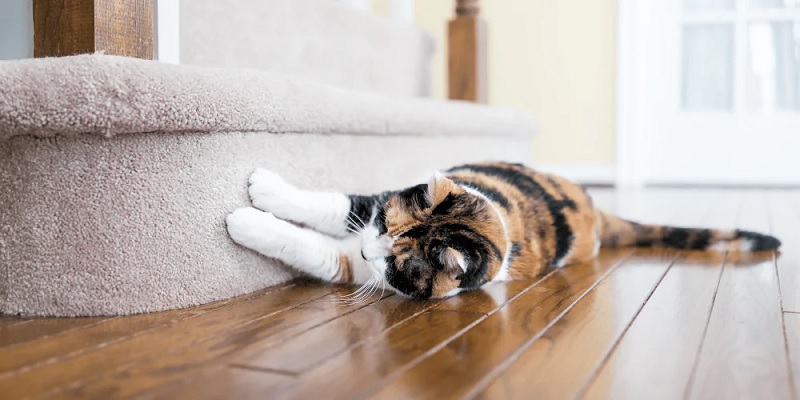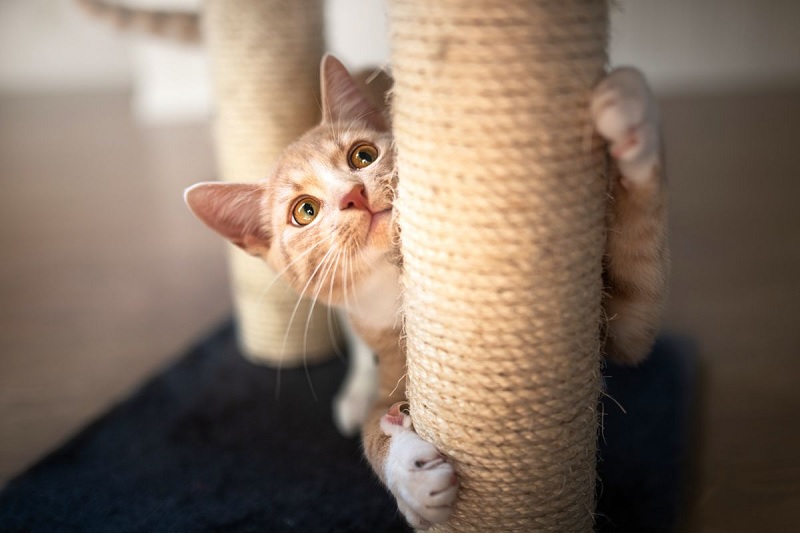How to Prevent Your Cat from Scratching Furniture
Are you tired of finding new scratch marks on your furniture every other day? Scratching is natural for cats, but it can wreak havoc on your home if left unchecked. The good news is, there are several ways you can redirect your feline’s scratching urges and protect your beloved couch from becoming their personal scratching post.
In this article, we’ll dive into why cats scratch, how to provide them with proper alternatives, and actionable tips to save your furniture from the claws of fury.
Why Do Cats Scratch?

Before diving into prevention, it’s essential to understand why your
Natural Instincts and Health Benefits
Scratching serves multiple functions for cats. Not only does it help them stretch their muscles, but it also sharpens their claws by removing the outer sheath. This is an essential part of keeping their claws healthy. Additionally, scratching helps cats release energy and tension, especially after a long nap or during playtime.
Marking Territory and Relieving Stress
Cats have scent glands in their paws, so when they scratch, they’re also marking their territory. This behavior is especially common in homes with multiple cats or new environments. Scratching can also be a coping mechanism for stress, providing a release of pent-up anxiety.
How to Discourage Your Cat from Scratching Furniture

To keep your
Providing Alternatives (Scratching Posts, Pads)
Scratching posts and pads are your first line of defense. These can come in various shapes, sizes, and textures to suit your
Tip: Choose a post covered with a material your
Placement of Scratching Posts
Placement matters more than you might think. Cats often scratch near areas where they rest, so positioning scratching posts near their favorite spots, like next to the couch or near windows, will increase their use. You can even place them right in front of the furniture your
Protecting Your Furniture from Scratches
While training your
Using Furniture Covers or Tapes
Anti-scratch tape or furniture covers can act as a deterrent. These products have textures that cats generally dislike, such as double-sided sticky tape, which prevents them from digging their claws into your couch or chair. However, be cautious, as some cats might attempt to scratch in new areas if they’re deterred from their usual spots.
Applying Cat Deterrent Sprays
Cat deterrent sprays made with harmless, yet effective, ingredients like citrus oils can be applied to furniture. Cats dislike these scents, and over time, they’ll learn to avoid the areas where you’ve sprayed. Be sure to reapply the spray regularly, as its effectiveness can wear off after a few days.
Training Techniques to Prevent Scratching
Behavioral training is another critical component in teaching your
Positive Reinforcement Training
Positive reinforcement works wonders with cats. Every time your
Redirecting Scratching Behavior
If you catch your
Keeping Your Cat ’s Claws in Check
Managing your
Regular Nail Trimming
Trimming your
Using Claw Caps for Extra Protection
If nail trimming doesn’t seem to do the trick, you can also try using claw caps. These are small, non-toxic coverings that fit over your
People Also Asked
1. How long does it take to train a
It can take anywhere from a few weeks to a few months to fully train a
2. Do scratching posts really help with scratching issues?
Yes! Scratching posts offer an alternative that satisfies your
3. Can declawing be an option to prevent scratching?
Declawing is generally discouraged by veterinarians, as it’s a painful and unnecessary procedure that can have long-term negative effects on a
4. How often should I trim my
Most cats’ claws should be trimmed every 2-4 weeks, depending on how quickly their nails grow.
5. What type of scratching posts work best?
Posts covered in sisal rope or fabric tend to be the most durable and satisfying for cats. Ensure you have both vertical and horizontal options available to see which your
Conclusion
Scratching is a natural and healthy behavior for cats, but it doesn’t have to mean the destruction of your furniture. By understanding your
Remember, patience is key—changing a






